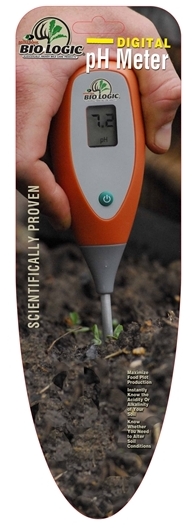 Food plots are exciting, but those who jump quickly into the planting phase without doing a little soil research are going to be very disappointed. Soil pH is crucial to crop development and overall yield. While the term “pH” may seem scientific and complicated, it doesn’t require a NASA-pedigree to understand. Simply put, different soils have different acidity levels and you need to take this into account before planting. How do you do this? First, get an economical and effective digital soil pH tester like those from Mossy Oak BioLogic. Simple to use, turn the unit on and insert it into a moist section of soil in order to get good dirt contact. If your soil is dry, till some up and place it in a five-gallon bucket and add distilled water. Then, insert the digital pH meter to get your reading. Once you’ve inserted the unit into the soil the meter will start out at a reading of 7 (neutral soil) and then slowly migrate to the actual pH level of your soil. Be sure to leave the unit in the ground between one and two minutes to get an accurate reading. Also be sure to clean the probe after each use to prevent a false reading when you move to a new area. Getting an accurate pH level will let you know if you need to add lime to raise the pH of your soil or add aluminum sulfate and sulfur to lower it.
Food plots are exciting, but those who jump quickly into the planting phase without doing a little soil research are going to be very disappointed. Soil pH is crucial to crop development and overall yield. While the term “pH” may seem scientific and complicated, it doesn’t require a NASA-pedigree to understand. Simply put, different soils have different acidity levels and you need to take this into account before planting. How do you do this? First, get an economical and effective digital soil pH tester like those from Mossy Oak BioLogic. Simple to use, turn the unit on and insert it into a moist section of soil in order to get good dirt contact. If your soil is dry, till some up and place it in a five-gallon bucket and add distilled water. Then, insert the digital pH meter to get your reading. Once you’ve inserted the unit into the soil the meter will start out at a reading of 7 (neutral soil) and then slowly migrate to the actual pH level of your soil. Be sure to leave the unit in the ground between one and two minutes to get an accurate reading. Also be sure to clean the probe after each use to prevent a false reading when you move to a new area. Getting an accurate pH level will let you know if you need to add lime to raise the pH of your soil or add aluminum sulfate and sulfur to lower it.
For more information about BioLogic’s digital pH meter or videos on how to use it, visit www.plantbiologic.com.




























